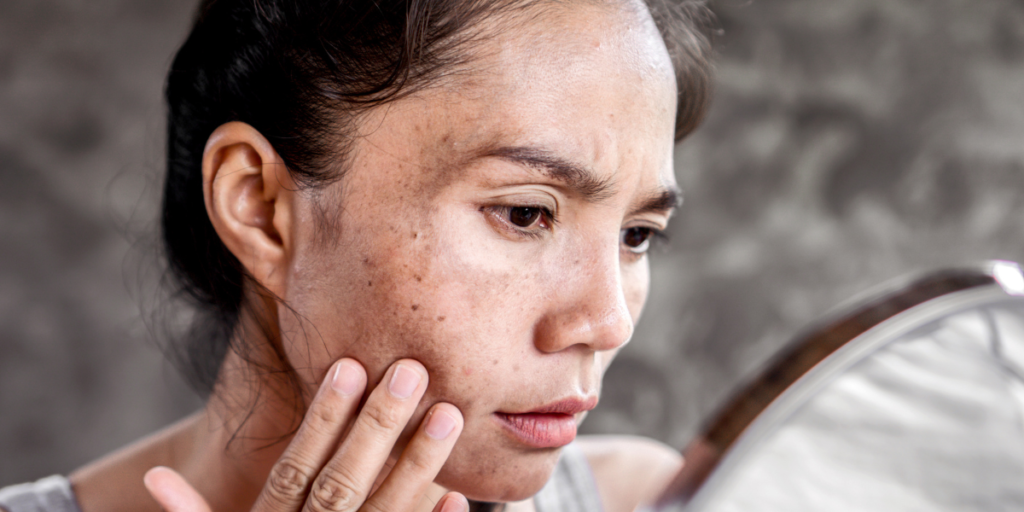Chemical peels are a popular dermatological treatment designed to improve the texture and appearance of the skin by removing its outer layers. This procedure is often employed to address various skin concerns, including dark spots, which are a common issue resulting from hyperpigmentation. These dark spots can be caused by factors such as sun damage, hormonal changes, aging, and acne scars. Chemical peels work by applying a chemical solution to the skin, which causes it to exfoliate and eventually peel off, revealing the fresher, less pigmented skin underneath.
The process not only reduces dark spots but also promotes collagen production, leading to firmer and more youthful-looking skin. Additionally, chemical peels can help unclog pores, reduce fine lines and wrinkles, and improve the overall radiance of the skin. With the variety of peels available, including superficial, medium, and deep peels, individuals can choose a treatment tailored to their specific skin type and concerns. It is essential to follow pre- and post-peel care instructions to achieve optimal results and minimize potential side effects.
Types of Chemical Peels
Superficial Peels:
- Ingredients: Typically use mild acids like alpha-hydroxy acids (AHAs), such as glycolic acid or lactic acid.
- Usage: Effective for treating mild skin discoloration and rough skin texture.
- Downtime: Minimal, with slight redness or peeling.
Medium Peels:
- Ingredients: Commonly use trichloroacetic acid (TCA) or stronger AHAs.
- Usage: Suitable for moderate dark spots, age spots, and freckles.
- Downtime: A few days to a week of redness and peeling.
Deep Peels:
- Ingredients: Use potent chemicals like phenol.
- Usage: Target severe pigmentation issues and deeper wrinkles.
- Downtime: Extensive, requiring several weeks for full recovery.
How Peels Work
Peels reduce dark spots by exfoliating the top layers of the skin, which contain excess melanin. By removing these layers, peels promote the regeneration of new skin cells, leading to a more even skin tone and texture.
- Exfoliation: The peel solution causes controlled damage to the skin, leading to the shedding of old, pigmented skin cells.
- Regeneration: As the skin heals, new cells form, which are typically less pigmented.
- Collagen Production: Medium and deep peels stimulate collagen production, further improving skin texture and reducing pigmentation.
Benefits of Peels for Dark Spots
- Even Skin Tone: By removing hyperpigmented skin, peels help achieve a more uniform complexion.
- Improved Skin Texture: Peels can smooth the skin’s surface, reducing the appearance of rough patches.
- Enhanced Absorption: Post-peel skin can better absorb skincare products, making treatments for hyperpigmentation more effective.
Risks and Considerations
- Irritation and Redness: Common, especially with medium and deep peels.
- Hyperpigmentation: In some cases, improper application can lead to increased pigmentation.
- Scarring: Rare but possible with deep peels.
- Sun Sensitivity: Skin is more vulnerable to UV damage post-peel, necessitating rigorous sun protection.
Post-Peel Care
- Moisturization: Essential to soothe and hydrate peeling skin.
- Sun Protection: Use broad-spectrum sunscreen to prevent new dark spots.
- Avoid Picking: Do not peel off flaking skin to prevent scarring.
- Gentle Cleansing: Use mild cleansers to avoid irritating treated skin.
Chemical peels are an effective method to reduce dark spots and achieve a brighter, more even skin tone. By selecting the appropriate type of peel and following proper post-treatment care, individuals can minimize risks and maximize the benefits of this dermatological procedure. For best results, it is recommended to consult with a dermatologist or trained skincare professional to determine the most suitable peel for individual skin concerns and types.
Consistency in post-peel skincare routines, including the use of serums and moisturizers, can enhance and prolong the results. Additionally, combining chemical peels with other treatments like microdermabrasion or laser therapy may offer synergistic benefits. Regular follow-up appointments ensure the treatment is progressing as desired and adjustments can be made if necessary. Always stay informed about the latest advancements in peel formulations for the most effective results.




